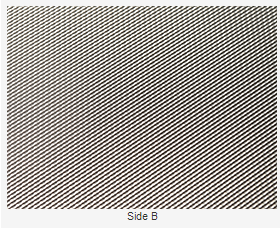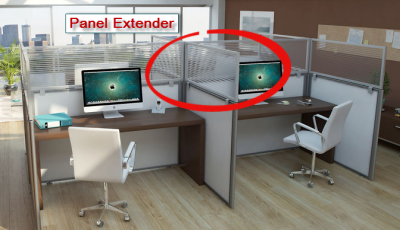How to reduce sound problems in clean rooms!
Return to Indoff - Silicon Valley
How to solve touchy sound problems in Clean Rooms
Typically, sound problems such as reverberation and vibration sound are mitigated by adding fibrous materials and baffles to walls and ceilings. But clean rooms typically do not permit fibrous materials and manufacturers are confronted with significant problems controlling sound when the walls and ceilings of clean rooms are often polished and highly sound reflective.
Finally, a non-fiber solution is available that significantly reduces sound problems in clean rooms.
The Noise Reduction Coefficient (commonly abbreviated NRC) is a scalar representation of the amount of sound energy absorbed when sound strikes a particular surface. An NRC of 0 indicates perfect sound reflection – sending the sound off in another direction, an NRC of 1 indicates perfect absorption when literally all sound is absorbed by the material (for example, foam cones).
NRC is most commonly used to rate general acoustical properties of acoustic ceiling tiles, baffles, wall tiles, banners, office screens, and acoustic wall panels. It is also occasionally used to rate floor coverings and construction materials.
NRC is intended to be a simplified acoustical rating of room construction and finish materials when the acoustical objectives of the space are less than sensitive. In certain applications, such as designs of music rehearsal, performance locaitons, and rooms used for critical speech, it is usually more appropriate to consider the sound absorption coefficients at the individual one-third octave band frequencies, including those above and below the bands used to compute NRC.
Enter the Silk Metal™ Architectural Ceiling & Wall Panel Systems
Acoustical Ceilings & Wall Panel Systems that gives you an approximate 0.80 NRC rating – nearly 80% of the sound is absorbed when installed with a 4” airspace – NO LINER NEEDED.
The Silk Metal™ Panel System is used in:
- Lay-In Ceilings
- Concealed Snap-In Ceilings
- Hook-On Ceilings
- Snap-In Wall Panel
- Hanging Baffles
Typical Applications for Silk Metal Sound Absorption Systems
- Restaurants
- Pro Audio/Studios
- Home Theaters
- Ceilings
- Walls
- Hallways
- Infused Art Panels
- Residential
- Public Spaces
- Swimming Pools
- Cafeterias
- Shopping Malls
- Offices
- Conference Rooms
- Classrooms
- Hospitals
- Lobbies
- Department Stores
- Exhibition Spaces
- Train Stations
- Airports
- Concert Halls
- Night Clubs
Silk Metal Panels
- Uses airspace behind panels to absorb sound
- Achieves acoustical value without acoustical liner
- Resembles smooth fabric surface in appearance
- Has reversible surfaces
- Can be fabricated into various forms & sizes
- Tested as a “sheet good” to prove its electromagnetic interference control
Silk Metal is the only surface material that has been tested to prove its AEMIC capabilities – acoustical & electromagnetic interference control
Silk Metal Architectural Ceiling & Wall Panel System uses a patented side-rolling grind method instead of a direct 90° punching to produce holes and has a surface ideal to reflect, absorb, and resonate wave energy generated from sound, electromagnetic, and heat mitigation.





